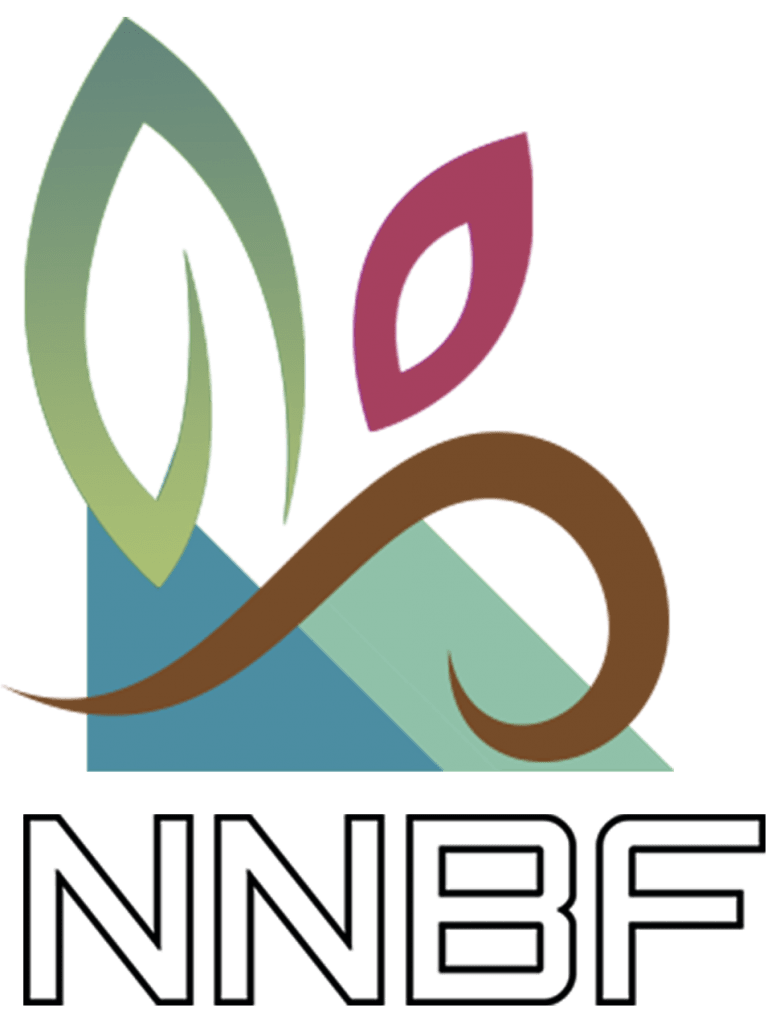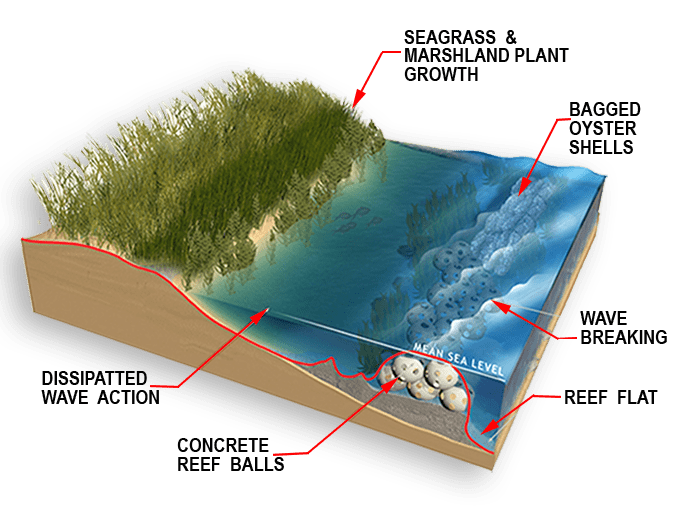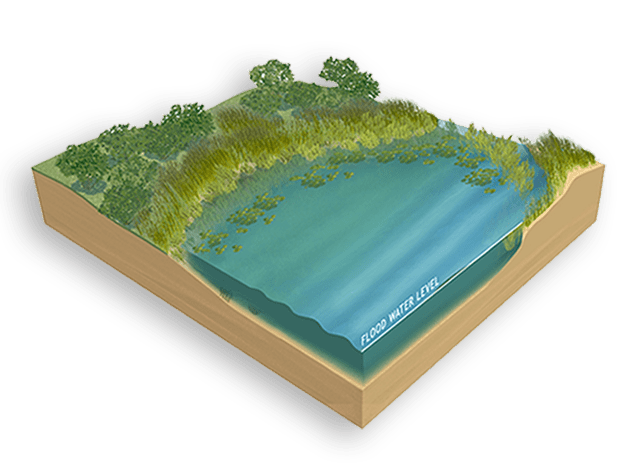What is a Natural & Nature Based Feature?
One of the opportunities that can be pursued through the use of Engineering With Nature (EWN) is the application of Natural and Nature-Based Features (NNBF). Natural and Nature Based Features are landscape features that are used to provide engineering functions relevant to flood risk management, while producing additional economic, environmental, and/or social benefits Examples of NNBF include beaches and dunes; vegetated environments such as maritime forests, salt marshes, freshwater wetlands and fluvial flood plains, and seagrass beds; coral and oyster reefs, barrier islands, among others (see Bridges et al. 2015 Use of natural and nature-based features for coastal resilience-pdf; see brochure-pdf for coastal NNBF). These features may occur naturally in landscapes or be engineered, constructed and/or restored to mimic natural conditions.
A strategy that combines NNBF with nonstructural and structural measures represents an integrated approach to flood risk management that can deliver a broad array of ecosystem

goods and services to local communities (see USACE 2013 Coastal risk reduction and resilience-pdf). For example, incorporating artificial reefs along a shoreline can attenuate waves–reducing coastal erosion, land loss, and flood damages–while also providing habitat for fish and wildlife. Engineered coastal landscapes that include wetlands, maritime forests and structural measures (e.g., a levee), can reduce flood risks while providing fish and wildlife habitat and opportunities for recreation (e.g., fishing, bird watching, hiking).

CALM BEFORE THE STORM
PREPARE • RESIST
Combine nonstructural and structural measures to deliver a full array of ecosystem goods and services.

THE STORM
RECOVER • ADAPT
NNBF features can help attenuate waves offering improved flood protection during storms
The EWN Initiative and Connectivity to NNBF
The EWN initiative is working to expand opportunities for application of NNBF by supporting R&D, technology transfer, and stakeholder engagement. NNBF can be differentiated into two categories: natural features and nature-based features. Natural features (e.g. a reef) are comparatively “long-standing” in terms of age and created through the action of natural physical, biological and chemical processes over time. Whereas, nature-based features are created by human design, engineering and construction to mimic natural features that provide similar, if not identical, services (Bridges et al., 2015).
NNBF represents an opportunity for both the flood risk management community and ecosystem restoration community. Flood risk managers are interested in considering ways to leverage natural systems to attenuate flood waters while expanding the range of services (to include environmental and social benefits) provided by infrastructure systems. Restoration scientists and engineers will want to consider where/how future restoration efforts could be located/designed in the landscape in order to provide engineering services related to flood risk management, in addition to the ecosystem goods and services typically pursued through restoration.
Some of the priority areas of current R&D on NNBF include quantifying the engineering benefits associated with NNBF, interactions between NNBF and conventional measures, and knowledge and tools for projecting the long-term operation and maintenance of NNBF.

References (See also Publications)
- U.S. Army Corps of Engineers. 2013. Coastal Risk Reduction and Resilience, US Army Corps of Engineers Civil Works Directorate: Washington, DC . (PDF).
- Bridges, T., P. Wagner, K. Burks-Copes, J.R. Vietri. (2015) Natural & Nature-Based Features [Brochure]. U.S. Army Engineer Research and Development Center, Vicksburg, MS. (PDF)
- Bridges, T. S., Burks-Copes, K. A., Bates, M. E., Collier, Z. A., Fischenich, J. C., Piercy, C. D., … and Rosati, J. D. 2015. Use of natural and nature-based features (NNBF) for coastal resilience. ERDC Special Reports Collection. ERDC-SR-15-1. Vicksburg, MS: U.S. Army Engineer Research and Development Center. http://hdl.handle.net/11681/4769
- Shoring Up: A science briefing on the potential of natural infrastructure to enhance the resilience of our nation’s coasts [Video file]. (2016, April 15). Retrieved March 05, 2018, from https://www.youtube.com/playlist?list=PLg9E-Np_QpNVazDNzd99ZUs-lN-dljtz-Presented by the American Meteorological Society and COMPASS (YouTube video)

